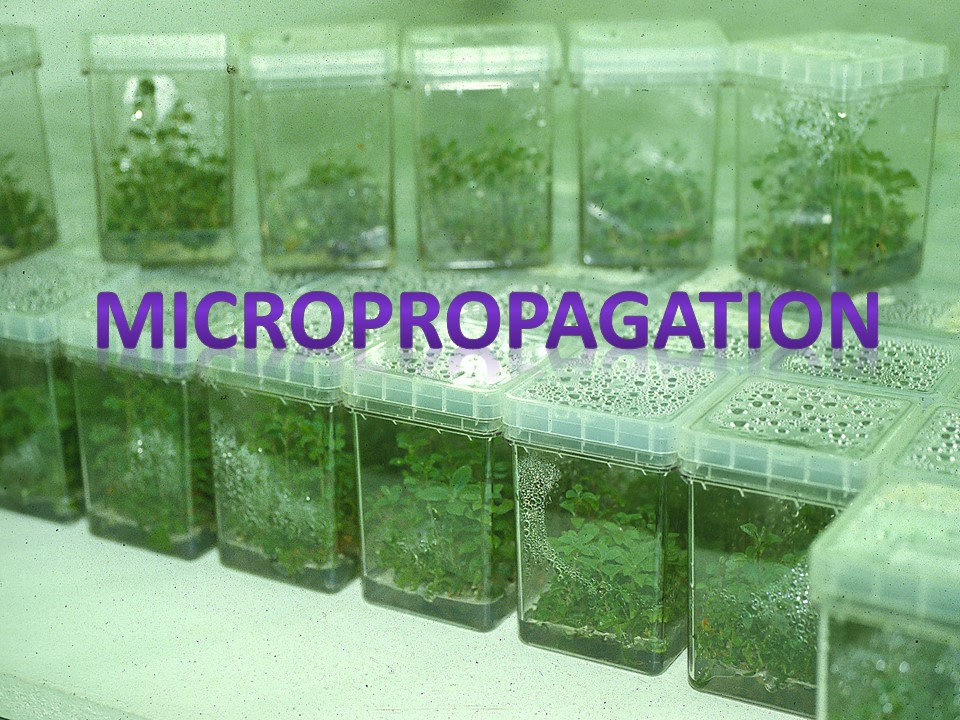Internship PowerPoint PPT Presentation
Title: Internship
1
Micropropagation
2
Micropropagation
- Art and Science of multiplying plants in vitro
3
(No Transcript)
4
Tissue culture is the initial step of
micropropagation where plant cells are grown in
an artificial medium, developing them into a
large number of plantlets.
5
What is plant tissue culture?
- Plant tissue culture is a technique of growing
plant cells, tissues, organs, seeds or other
plant parts in a sterile environment on a
nutrient medium
6
Terms Used in Plant Tissue Culture
- Explant
- An excised piece of differentiated tissue or
organ is regarded as an explant. The explant may
be taken from any part of the plant body e.g.,
leaf, stem, root. - Callus
- The unorganized and undifferentiated mass of
plant cells is referred to as callus. Generally,
when plant cells are cultured in a suitable
medium, they divide to form callus i.e., a mass
of parenchymatous cells.
7
Terms Used in Tissue Culture
- Dedifferentiation
- The phenomenon of mature cells reverting to
meristematic state to produce callus is
dedifferentiation. Dedifferentiation is possible
since the non- dividing quiescent cells of the
explant, when grown in a suitable culture medium
revert to meristematic state. - Re-differentiation
- The ability of the callus cells to differentiate
into a plant organ or a whole plant is regarded
as re-differentiation.
8
Basic Technique of Plant Tissue Culture
9
Tissue Culture Basics
10
In many cases, older tissue will not form callus
younger tissue easier to surface disinfect
11
EXPLANT SIZE
- the smaller the explant, the harder it is to
culture. - The larger explants probably contain more
nutrient reserves and plant growth regulators to
sustain the culture.
12
PLANT QUALITY
- It is advisable to obtain explants from plants
which are healthy as compared to plants under
nutritional or water stress or plants which are
exhibiting disease symptoms.
13
GOAL
- Depending on what type of a response is desired
from the cell culture, the choice of explant
tissue will vary.
14
- For example, if clonal propagation is the goal,
then the explant will usually be a lateral or
terminal bud or shoot. - For callus induction, pieces of the cotyledon,
hypocotyl, stem, leaf, or embryo are usually
used. - Excellent explants for callus induction are
seedling tissues from aseptically germinated
seeds or immature inflorescences. - Leaf tissue from the aseptically germinated seed
is a good source of tissue for protoplast
isolation. - To produce haploid plants or callus, the anther
or pollen is cultured.
15
(No Transcript)
16
Application of micropropagation
- Mass clonal multiplication of desirable genotypes
of plants. - Plant can multiply irrespective of season
- In vitro conservation and propagation of
endangered species. - Production of disease free plant through
meristem culture
17
Application of micropropagation
- Through tissue culture, over a million plants can
be grown from a small piece of plant tissue
within 12 months.
18
Advantages of micropropagation
- Short span of time and space large number of
plant can be produced starting from a single
individual. - Minimum growing space required
- Rapid efficient propagation
- Long-term germplasm storage
- Production of difficult-to-propagate species
19
Disadvantages
- Equipment/facility intensive operation
- Technical expertise
- Protocols not optimized for all species
- It may be too expensive

